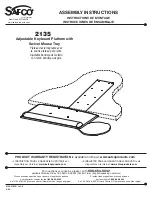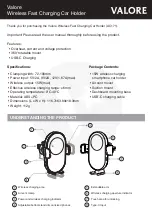
NovaLynx Corporation________________________________________________________________________________
200-WS-02
Page 8
April 2021
8
INSTALLATION
NOTE:
Wind direction sensors are usually aligned to true north, rather than magnetic north. True north
is usually found by reading a magnetic compass and applying the correction for magnetic declination.
On-line calculators are available to enter your location and obtain the correction factor. One such
website is:
https://www.ngdc.noaa.gov/geomag-web/#declination
1.
Loosen the two mounting screws on the base of the sensor.
2.
Place the sensor on the top of the mast or mounting stub.
3.
Align the NORTH label to geographic (true) north.
4.
Tighten the mounting screws using moderate torque.
The PVC jacket of the cable will last for many years outdoors under normal circumstances. In harsh
environments it may be necessary to protect the cable with conduit.
Route the sensor cable down the mast and to the monitoring equipment in the most direct manner.
Fasten the cable to the mast with cable ties to prevent whipping during high velocity winds. For best
results, use plastic cable ties that are resistant to ultra-violet radiation and place them at two foot
intervals. Leave a "drip loop" of cable below the entry point to the equipment enclosure to help keep
moisture out.
Birds of all sizes find the shaft of the wind vane a desirable place to land. The weight of a large bird can
easily damage the potentiometer by breaking it loose from the body of the sensor. The best way to
reduce this hazard is to provide an alternate landing site nearby that would be more attractive to the
weary bird.































